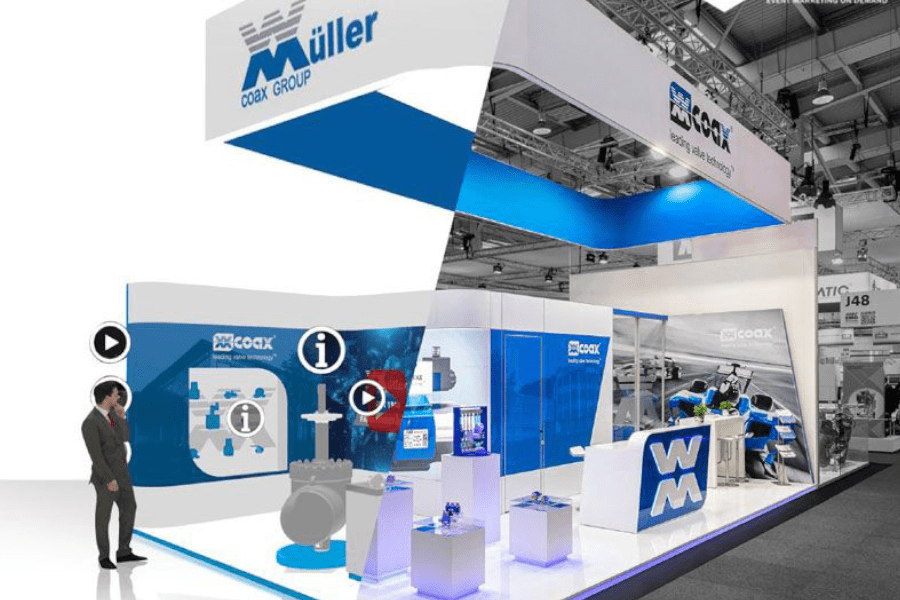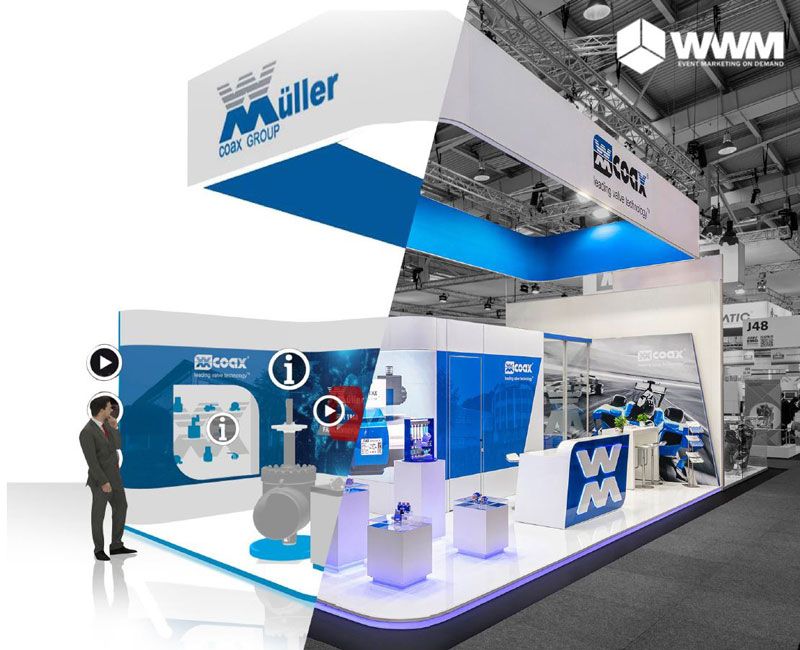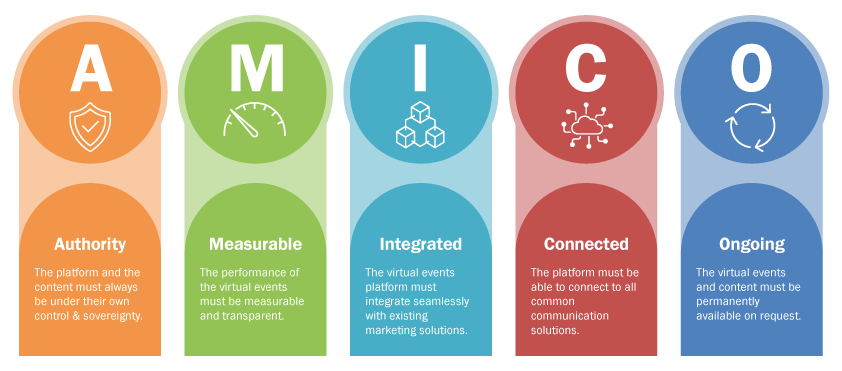Virtual trade fair: Isolated solution vs. long-term strategy
The virtual trade fair has been around for years as a digital alternative to the real trade fair - it only became established during the shutdown of...
4 min read
 Christina Gier
:
Tuesday, 3. November 2020
Christina Gier
:
Tuesday, 3. November 2020

Virtual trade fair stands are becoming increasingly important for companies. While the topic was initially viewed with skepticism and assumed to be a short-term solution, it is now impossible to imagine the trade fair and event industry without virtual trade fair stands. Many exhibitors are already using virtual exhibition stands as part of their marketing strategy and appreciate the associated benefits.
If you decide to use a virtual exhibition stand, there is another important question: should my exhibition stand be realized in 2D or 3D? In this blog post, I would like to make it easier for you to decide on this question and present the respective variants in more detail.

Basically, you cannot say that it is better or worse to display your virtual trade fair stand in 2D or 3D. Each variant has its strengths and weaknesses. The “best” solution depends more on your personal requirements for the virtual trade fair stand. These can then be used to evaluate the two possible solutions.
To create a 2D exhibition stand, all you need is an image file of your real exhibition stand, which you can then simply add interaction points to. The implementation is therefore quite simple. A simple image is not enough to create a 3D exhibition stand. A 3D file is required here, which you can create using CAD software. Once this file has been uploaded, it is processed in the same way as the 2D exhibition stand. If you already have 3D files of your real exhibition stand, you can upload them to the software in the same way and do not need to create any new data.
Your visitors can move around freely in a three-dimensional exhibition stand. Your exhibition stand can be rotated and viewed from any perspective and any angle. It is also possible to zoom in and out.
You do not have these options with a two-dimensional exhibition stand. In this case, your visitors only see your virtual exhibition stand as a 2D image, which they can view without being able to move or change it.
You also have the option of linking your 2D stand with another 3D stand. For example, you can divide a two-dimensional stand into several subject areas and thus create an overview of many subtopics. If you then want to go into an area in more detail, you can create a link to a 3D stand via an info point. Here you can then provide an in-depth, multi-dimensional insight into the focused topic.

Operating an exhibition stand in 2D is quite simple. Visitors only have the option of clicking on information points. This means there is no distraction caused by unnecessary complexity or movement in the room. Due to the primitive nature of a 2D exhibition stand, no explanation is necessary and operation is usually intuitive.
Due to the additional movement options in a 3D exhibition stand, operation is somewhat more complex. A brief introduction to the various options for moving around the 3D exhibition stand may be required.
With a 2D exhibition stand, you can integrate high-resolution images to achieve a high-quality display. The resolution of images in a 3D exhibition stand is lower. This is mainly due to the constantly changing views caused by the many possible movements.
When opening a 2D exhibition stand, you have a minimal loading time, your exhibition stand is virtually there immediately. The 3D exhibition stand takes a little longer to load. As there are more options for movement, the stand takes longer to load. However, once this process is complete, no further loading times are required when you move around or open an interaction point.

Even if the longer loading time for a trade fair stand in 3D is of course not optimal at first, it definitely pays off in terms of the visitor or trade fair experience. The ability to move freely around the stand, view it from every angle and zoom in and out creates a real “wow experience”. Visitors to the virtual trade fair stand in 3D have more of a feeling of being on site.
However, the 2D exhibition stand does not offer as many functions. You can't move around freely or zoom in and out. The focus here is more on the interaction points and less on movement in the virtual event. Some 2D solutions, such as VirtualShow, offer to combine several images and thus integrate them into a trade fair experience, which can also create a feeling of movement. On the experience side, however, the 3D trade fair stand scores first.
Nowadays, almost everyone uses their smartphone every day. If you integrate your virtual exhibition stand on your homepage, you should also consider the use of mobile devices. A 2D exhibition stand has a fast loading time on smartphones. Since no movements can take place within the stand, operation is quite simple. In addition, the interaction windows adapt to the screen size of the mobile device.
A 3D exhibition stand takes longer to load and is somewhat more difficult to control due to the many movement options. In addition, some software solutions for 3D exhibition stands do not work on mobile devices.
Focus on interaction points
As I mentioned at the beginning, it is not possible to say in general terms which dimension is the best solution for a virtual trade fair stand. Your requirements and objectives are decisive factors here. However, when choosing your software, you should always pay attention to which dimensions you can create with it.
If you don't want to choose between two- and three-dimensionality, you should opt for a software solution that supports both variants. Find out more about our VirtualShowsoftware solution .

The virtual trade fair has been around for years as a digital alternative to the real trade fair - it only became established during the shutdown of...

The coronavirus pandemic has really put a spanner in the works for exhibitors at trade fairs and congresses. Agile companies have reacted quickly and...
.jpeg)
Virtual trade fair stands - probably the trend of recent times in the trade fair industry. Driven by the unprecedented fact that the global...